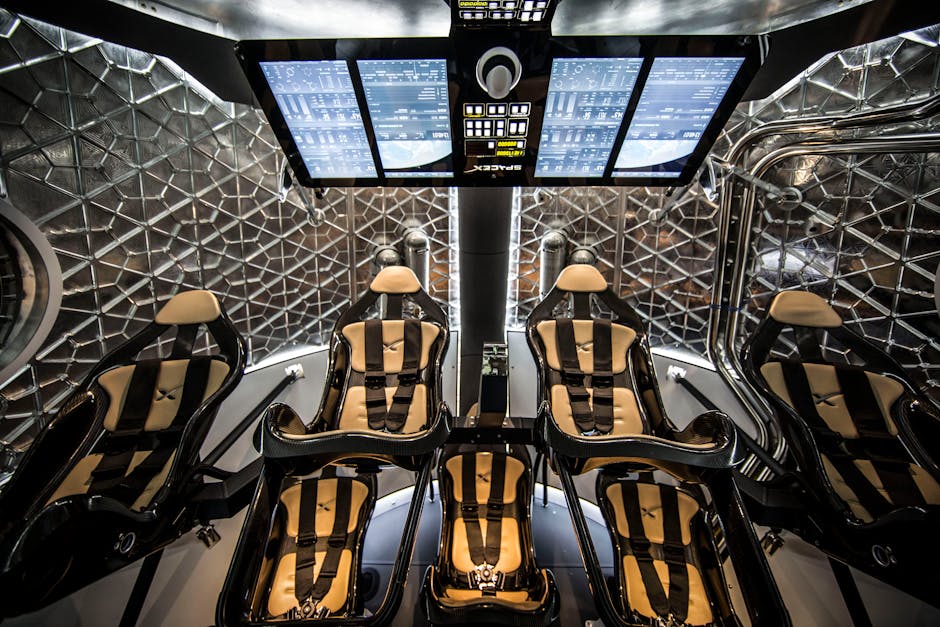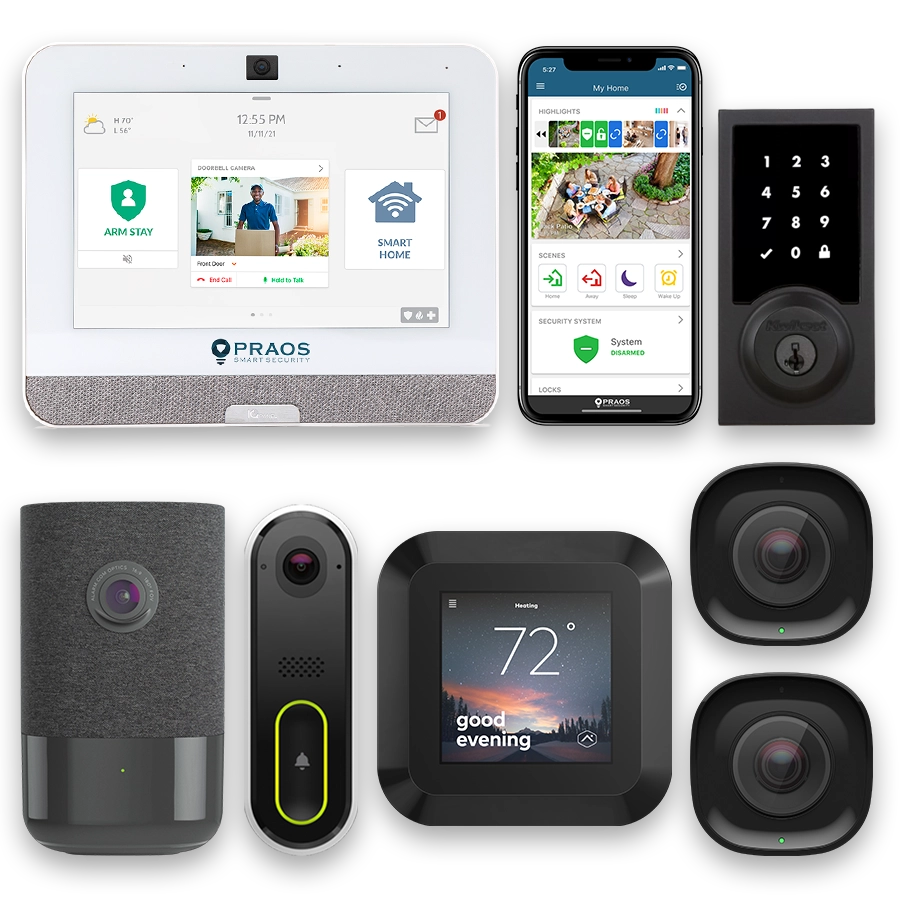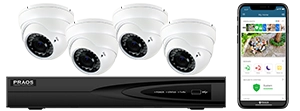Introduction: Understanding Modern Access Control Systems
Access control systems have significantly evolved over the years, driven by the need for enhanced security in various environments, from residential properties to large-scale commercial operations. Modern access control systems now integrate advanced technologies that go beyond traditional lock-and-key methods. These systems are designed to not only prevent unauthorized access but also to monitor and manage entry points more efficiently.
Understanding the Evolution
Initially, access control systems were simplistic, primarily relying on mechanical locks. However, as security needs grew, electronic access control systems (EAC) were developed. EAC systems introduced the use of keycards, PIN codes, and other electronic credentials, offering greater flexibility and control.
Technological advancements have led to the development of more sophisticated access control mechanisms. These modern systems leverage digital technologies, making it possible for users to manage control points via smartphones and cloud-based platforms. The integration of biometric recognition, RFID, and NFC technologies has further refined the capabilities and security features of these systems.
The Importance of Security in Access Control
In the contemporary era, the importance of secure access control cannot be overstated. With the increase in cyber threats and physical break-ins, it is imperative to employ advanced systems that not only deter potential intruders but also provide comprehensive monitoring and real-time alerts.
Effective access control systems reduce the risk of unauthorized access, thereby protecting sensitive data, valuable assets, and ensuring the safety of occupants. These systems are also integral in complying with regulatory standards across various industries, including healthcare, finance, and critical infrastructure.
Components of Modern Access Control Systems
Modern access control systems comprise several components that work together to secure entry points:
- Readers: Devices that read access credentials, such as keycards, biometrics, or mobile devices.
- Controllers: The central processing units that decide whether to grant or deny access based on the credentials presented.
- Credentials: These can come in various forms, including keycards, PIN codes, biometric data, or mobile apps.
- Locks: Mechanical or electronic mechanisms that physically secure doors or entry points.
- Software: Platforms that manage user access rights, monitor entry logs, and provide analytics for security auditing.
Integrating these components allows for a streamlined and efficient system that can be customized based on specific security requirements.
Conclusion
The landscape of access control is changing rapidly, driven by continuous advancements in technology and the growing complexity of security threats. Understanding the foundational elements and significance of modern access control systems is crucial for implementing robust security measures. By leveraging these advanced systems, organizations and individuals can ensure maximum protection against unauthorized access while maintaining operational efficiency.
The Role of Security Sensors in Access Control
Security sensors play a pivotal role in modern access control systems by providing multiple layers of security and enhancing the overall effectiveness of control mechanisms. Understanding the various types of security sensors and their functionalities is essential in recognizing their contribution to advanced access control techniques.
One of the principal types of security sensors used in access control is motion detectors. These sensors use technologies such as passive infrared (PIR), microwave, or even dual tech (which combines PIR and microwave) to detect movement within a certain area. Motion detectors are effective in identifying unauthorized access attempts and triggering alarms or notifications to security personnel.
Another critical type of sensor is the door/window contact sensor, which monitors the opening and closing of doors and windows. These magnetic sensors consist of two parts: a magnet and a switch. When the monitored door or window is closed, the magnet keeps the switch in a closed position. If the door or window opens, the magnet separates from the switch, breaking the circuit and triggering an alert. These sensors are vital for knowing the real-time status of entry points and ensuring they are secured.
Glass break sensors are designed to detect the sound frequency of breaking glass. These sensors are commonly used in environments where windows or glass doors present potential security vulnerabilities. When glass is broken, these sensors recognize the specific acoustic signature and trigger an alarm, alerting security teams to potential breaches.
Environmental sensors, such as smoke detectors, heat sensors, and flood sensors, also contribute to access control by safeguarding against non-intrusive threats. These sensors provide critical information on environmental hazards that could impact the security and safety of the premises. For example, smoke detectors are vital in identifying and responding to fire incidents, ensuring a coordinated security response.
RFID and proximity sensors are widely implemented in access control systems to identify and authenticate individuals. These sensors rely on radio frequency identification technology to communicate with RFID tags or cards. When an authorized individual presents their RFID-enabled credential near the sensor, it grants access. These sensors are popular in contactless access control systems, offering convenience and enhancing security by minimizing physical contact points.
In addition to these sensors, biometric sensors, including fingerprint, facial recognition, and iris scanners, utilize unique biological characteristics to authenticate individuals. Biometric sensors are increasingly used for their high level of accuracy and difficulty to forge. These sensors add a robust layer of security by ensuring that only authorized personnel can gain access.
Implementing and integrating diverse security sensors into an access control system increases the reliability and responsiveness of the entire security infrastructure. By leveraging the strengths of various sensors, organizations can create a multi-faceted security environment that deters unauthorized access and promptly responds to security breaches.
Advancements in Smart Lock Technologies
The realm of smart lock technologies has seen significant advancements, leading to enhanced security measures for both residential, and commercial properties. Among the pioneering companies in this sector is Praos, a prominent name in the Richmond home security landscape. Praos emphasizes not only the installation of state-of-the-art security systems but also the integration of these systems into a cohesive smart home experience.
Modern smart locks offer a myriad of functions that extend beyond traditional key-and-lock mechanisms. The technology incorporated into these devices provides enhanced security and added convenience. Features like real-time access monitoring, remote control via smartphone apps, and automated locking mechanisms are now common in advanced smart lock systems.
One of the notable developments in smart lock technology is the use of biometric authentication. This can include fingerprint scanning, facial recognition, and voice identification. These methods provide a higher level of security by ensuring that only authorized individuals can gain access. The trend towards biometric solutions reflects the growing importance of seamless and non-intrusive security measures in today’s smart homes.
Praos takes this a step further by offering integrated solutions that combine traditional smart lock functions with advanced security protocols. For new customers, Praos provides free equipment and installation services, making it easier to upgrade to a modern security system. The smart locks recommended and installed by Praos are part of a connected home system that operates through a single app, streamlining the management of security, automation, and surveillance.
Furthermore, modern smart locks are designed to be compatible with various home automation systems. This interoperability allows users to create custom security protocols that synchronize with other smart devices within their homes. For instance, a smart lock can be programmed to trigger specific actions such as turning on lights or adjusting the thermostat upon entry.
The combination of smart locks with other security features is one of the key strengths of Praos’s offerings. With subscription plans starting at $19.95 per month, Praos ensures that cutting-edge security technologies are accessible to a broad range of customers. The company’s local expertise and commitment to customer satisfaction have solidified its reputation as a leading provider in the Richmond area.
In summary, the advancements in smart lock technologies, particularly when integrated into a connected home system, provide enhanced security and convenience. Companies like Praos are at the forefront of this innovation, striving to offer solutions that not only protect but also simplify the lives of their users. By leveraging these technologies, homeowners can achieve a higher level of security and peace of mind.
Integration of Security Sensors and Smart Locks
The integration of security sensors and smart locks represents a sophisticated approach in modern access control systems. By combining these technologies, facilities can achieve a higher level of security and operational efficiency. This chapter delves into the specifics of how these components work together and the benefits they offer.
Synergistic Benefits
When security sensors and smart locks are integrated, they form a robust security mechanism that can respond dynamically to various situations. Security sensors, such as motion detectors, door/window sensors, and contact sensors, provide real-time data that can trigger smart lock responses. This synergy enhances the protective capabilities of the entire access control system.
Key Components
Several components play crucial roles in the seamless integration of security sensors and smart locks:
- Control Panels: The central hub where data from sensors and smart locks is processed.
- Communication Protocols: Technologies such as Zigbee, Z-Wave, and Wi-Fi, which enable communication between sensors and locks.
- Cloud-Based Management: Allows for remote monitoring and management through mobile or web applications.
Operational Workflow
The operational workflow of an integrated security system typically involves the following steps:
- Detection: Security sensors detect an event, such as motion or an open door.
- Communication: The sensor sends a signal to the control panel or directly to the smart lock.
- Action: The smart lock responds appropriately, such as locking the door if an unauthorized entry is detected.
- Notification: Alerts are sent to authorized personnel via notifications or alarms.
Example Applications
Real-world applications demonstrate the effectiveness of integrating security sensors and smart locks. For instance, in a commercial building, motion detectors can trigger the locking mechanisms of smart locks during off-hours when unauthorized personnel movement is detected. This not only prevents unauthorized access but also minimizes the need for manual intervention.
Comparison of Communication Protocols
| Protocol | Key Features |
|---|---|
| Zigbee | Low power consumption, mesh networking, suitable for large installations |
| Z-Wave | Strong interoperability, extensive range, secure communication |
| Wi-Fi | High data transfer rate, common in many devices, broader frequency range |
Security Considerations
While integration offers numerous benefits, it’s essential to address potential security vulnerabilities:
- Data Encryption: Ensuring all communications between sensors, control panels, and smart locks are encrypted to prevent unauthorized access.
- Regular Updates: Keeping firmware and software up-to-date to protect against emerging threats.
- Access Control Lists: Defining clear access permissions to restrict who can modify or access system settings.
Conclusion
Integrating security sensors with smart locks creates a more responsive and adaptive access control system. By leveraging advanced communication protocols and robust security measures, organizations can significantly enhance their protective measures while enjoying the convenience and efficiency that modern technology affords.
Case Studies of Effective Access Control Implementations
Case studies of effective access control implementations demonstrate the pivotal role that advanced technologies play in improving security. For this chapter, real-world examples are explored to showcase how the integration of security sensors and smart locks can enhance protection in various settings.
One notable example is the San Francisco International Airport (SFO). SFO has employed a comprehensive access control system that includes biometric sensors and smart locks. These technologies ensure that only authorized personnel can access restricted areas. The implementation involves fingerprint and iris recognition sensors, which are linked to the smart locks of crucial entry points. This integration has led to a significant reduction in unauthorized access incidents.
Another important case is the use of advanced access control at corporate offices, such as those of Google. Google’s offices employ a multi-layered security approach that combines RFID card readers, facial recognition sensors, and smart locks. RFID cards are used for general access, while facial recognition technology governs entry to sensitive zones. Smart locks with audit trail capabilities provide an additional layer of security, allowing security teams to monitor access patterns in real-time.
In the residential sector, the Castlebrook Apartment Complex in Chicago has benefited from a sophisticated access control system. The complex uses a combination of video surveillance, motion detectors, and smart locks integrated with a mobile app. Tenants have the convenience of keyless entry while management has enhanced monitoring capabilities. Motion sensors trigger alerts for any unusual activity around entry points, which is particularly beneficial for deterring burglary attempts.
Universities also illustrate effective applications of access control technologies. The University of Cambridge has deployed a smart card access system across its campuses. This system is augmented with biometric scanners and smart locks in high-security labs and data centers. The dual authentication mechanism of smart cards and biometrics helps in ensuring that only authorized individuals can access sensitive areas, thereby protecting valuable research and data.
A retail setting example involves the Metro Retail Store chain, which has implemented an extensive access control system in its warehouses. By employing smart locks equipped with both keypad and biometric entry, combined with motion detectors and CCTV cameras, Metro has been able to significantly decrease theft and unauthorized entries. The system’s efficiency is further reinforced with audit trails that track and record every access attempt, providing valuable data for further security assessments.
Overall, these examples underline the effectiveness of advanced access control techniques in diverse environments. By integrating security sensors and smart locks, organizations and facilities can achieve a higher level of security, ensuring that only authorized individuals gain access while providing comprehensive monitoring and data collection capabilities.
Future Trends and Innovations in Access Control
As technology continues to evolve, the field of access control is poised to experience significant advancements. These innovations promise to enhance security, improve user experience, and streamline operations.
Biometric Authentication
Biometric authentication methods, such as fingerprint, facial recognition, and iris scanning, are becoming increasingly sophisticated and reliable. These techniques leverage unique biological characteristics to verify identity, significantly reducing the risk of unauthorized access. Recent advancements in artificial intelligence and machine learning further enhance the accuracy and efficiency of biometric systems.
Blockchain Technology
Blockchain technology is emerging as a promising tool for access control systems. By utilizing decentralized ledgers, blockchain can provide secure, tamper-proof records of access events. This transparency and security can be particularly beneficial in high-security environments, ensuring that access logs are immutable and trustworthy.
Artificial Intelligence (AI) and Machine Learning
AI and machine learning are increasingly being integrated into access control systems to improve decision-making and predictive capabilities. These technologies can analyze vast amounts of data to identify patterns and anomalies, enabling proactive measures against potential security threats. For example, AI can detect unusual behavior and trigger alerts before a security breach occurs.
Internet of Things (IoT) Integration
The proliferation of IoT devices has the potential to revolutionize access control systems. IoT-enabled sensors and devices can provide real-time data and insights, allowing for more responsive and dynamic security measures. Integration with other smart systems, such as lighting and HVAC, can further enhance both security and operational efficiency. This interconnected approach enables a more comprehensive and adaptable security posture.
Cloud-Based Access Control
Cloud-based access control solutions are gaining popularity due to their scalability and flexibility. These systems offer centralized management, allowing administrators to monitor and control access from anywhere with an internet connection. Cloud-based solutions also facilitate easier updates and maintenance, ensuring that the access control system remains up-to-date with the latest security protocols.
Mobile Credentialing
Mobile credentialing is another emerging trend, wherein smartphones and other mobile devices serve as credentials for access control. This approach offers convenience and eliminates the need for physical keys or cards. Mobile access control systems can utilize secure communication protocols, such as NFC (Near Field Communication) or Bluetooth, to ensure a high level of security.
Enhanced Multi-Factor Authentication (MFA)
Multifactor authentication (MFA) is evolving to include more robust and varied methods of verification. Combining multiple forms of authentication, such as biometric data, mobile credentials, and traditional passwords, increases security by requiring multiple proofs of identity. Advances in MFA technology aim to balance security and user convenience.
Data Privacy and Compliance
As access control systems become more data-intensive, ensuring data privacy and compliance with regulations such as GDPR (General Data Protection Regulation) and CCPA (California Consumer Privacy Act) becomes critical. Innovations in data encryption, anonymization, and user consent management are essential to protect sensitive information and maintain regulatory compliance.
Overall, the future of access control is driven by technological advancements that enhance security, efficiency, and user experience. As these trends and innovations continue to develop, organizations must stay informed and adapt to ensure robust protection against evolving threats.





